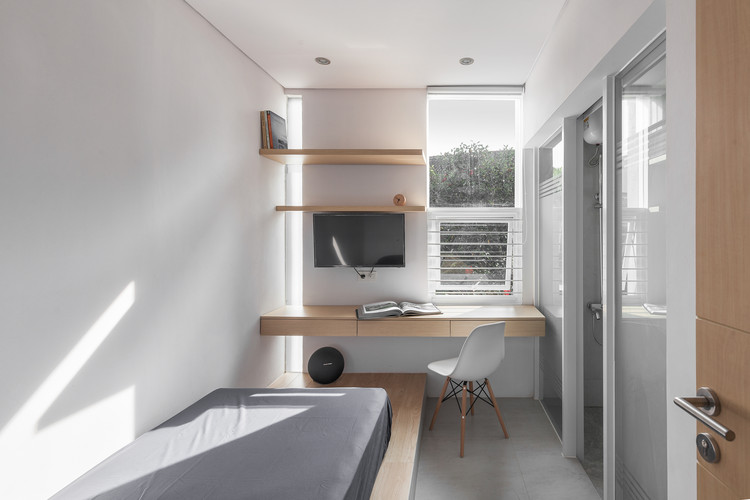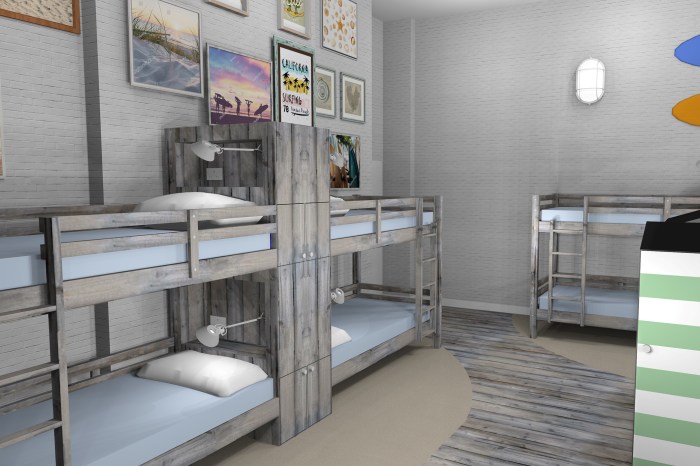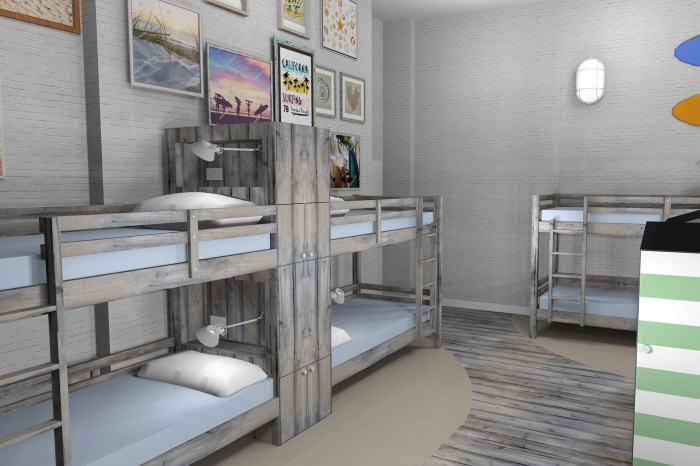Boarding house interior design is a unique challenge, blending the need for individual privacy with the desire for a sense of community. It requires careful consideration of functionality, aesthetics, and the specific needs of the target audience.
From historical origins to modern adaptations, boarding houses have evolved to cater to diverse demographics. They offer a distinct alternative to traditional housing options, often appealing to individuals seeking affordability, social interaction, and a sense of belonging.
Creating a Sense of Community: Boarding House Interior Design

A boarding house is more than just a place to sleep; it’s a community where residents come together to share experiences, build relationships, and create lasting memories. Designing spaces that foster interaction and social connections is essential for creating a welcoming and vibrant living environment.
Shared Spaces for Connection
Shared spaces are the heart of a boarding house community. They provide opportunities for residents to gather, socialize, and build relationships.
Boarding house interior design can be a challenge, balancing the need for shared spaces with individual comfort. You might find inspiration in the relaxed, airy aesthetic of american beach house interior design , incorporating light colors, natural textures, and a sense of openness to create a welcoming and inviting atmosphere for residents.
This approach can help to foster a sense of community and shared enjoyment within the boarding house.
- Communal Kitchens: A well-designed communal kitchen encourages interaction. Consider ample counter space, a large dining table, and comfortable seating to facilitate meal preparation, shared meals, and casual conversations.
- Living Rooms: A comfortable living room with cozy seating, a fireplace (if feasible), and entertainment options like a television or a game console provides a space for relaxation, socializing, and shared activities.
Designing a boarding house interior requires careful consideration of functionality and aesthetics. Creating a comfortable and inviting space for multiple residents can be challenging, especially within a limited area. For inspiration, consider exploring the principles of 36 sqm house interior design , which often focuses on maximizing space and creating a sense of openness.
These strategies can be adapted to boarding house design, helping to create a welcoming and efficient living environment for all residents.
- Outdoor Spaces: A patio, garden, or rooftop terrace offers residents a chance to enjoy fresh air, connect with nature, and engage in outdoor activities. Consider adding comfortable seating, a grill, or a fire pit for evening gatherings.
Budgeting and Cost Considerations

Designing and furnishing a boarding house involves significant financial considerations. It’s crucial to balance creating a comfortable and inviting space with staying within a realistic budget. This section explores typical costs, strategies for maximizing value, and budget-friendly design solutions.
Typical Costs Associated with Designing and Furnishing a Boarding House
Understanding the typical costs associated with designing and furnishing a boarding house is essential for effective budgeting. Costs can vary depending on the size and location of the property, the scope of the renovation, and the quality of materials and furnishings.
Boarding house interior design often involves maximizing space and creating a comfortable, shared living environment. Similar to designing a smaller home, utilizing every inch effectively is crucial. If you’re looking for inspiration, exploring ideas for an 850 sq ft house interior design can provide valuable insights.
By applying these principles, you can create a welcoming and functional boarding house that feels spacious and inviting for all residents.
- Renovation and Construction:This can include structural changes, plumbing and electrical work, painting, flooring, and kitchen and bathroom upgrades. Costs can range widely, depending on the extent of the renovation.
- Design Fees:Hiring an interior designer can significantly impact the budget, with fees typically charged by the hour or as a percentage of the project’s total cost.
- Furniture and Decor:This includes beds, mattresses, dressers, desks, chairs, lighting, curtains, and other decorative items. The cost of furniture can vary widely, depending on the quality, style, and brand.
- Utilities and Maintenance:Ongoing costs include electricity, gas, water, trash removal, and regular maintenance.
Strategies for Maximizing Value and Minimizing Expenses, Boarding house interior design
Several strategies can help maximize value and minimize expenses when designing and furnishing a boarding house.
- Prioritize Essential Upgrades:Focus on essential renovations that enhance functionality and appeal, such as updating kitchens and bathrooms, and consider prioritizing these over cosmetic changes.
- Shop Around for Materials and Furnishings:Compare prices from different suppliers and retailers to find the best deals. Consider purchasing furniture and decor in bulk to save on costs.
- Utilize Second-Hand Furniture and Decor:Explore thrift stores, consignment shops, and online marketplaces for affordable and unique furniture and decor.
- Embrace DIY Projects:Consider DIY projects for tasks like painting, wallpapering, and furniture refinishing to save on labor costs.
- Maximize Natural Light:Utilize natural light by installing large windows and minimizing unnecessary walls to reduce the need for artificial lighting, potentially saving on energy costs.
- Implement Energy-Efficient Solutions:Consider energy-efficient appliances, LED lighting, and insulation to reduce utility costs.
Budget-Friendly Design Solutions and Furniture Options
Several budget-friendly design solutions and furniture options can help create a comfortable and inviting space without breaking the bank.
- Use Neutral Colors:Neutral colors create a sense of spaciousness and allow for easy customization with pops of color through accessories.
- Incorporate Multifunctional Furniture:Utilize furniture that serves multiple purposes, such as a sofa bed or a desk that doubles as a vanity.
- Layer Textiles:Add warmth and texture with affordable textiles like throw blankets, pillows, and rugs.
- Embrace DIY Decor:Create unique and affordable decor by using repurposed materials, such as old crates, pallets, or vintage mirrors.
- Utilize Affordable Lighting:Utilize affordable lighting options, such as pendant lights, table lamps, and string lights, to create a cozy and inviting ambiance.
- Embrace Natural Elements:Incorporate natural elements, such as plants, wood accents, and stone, to create a calming and welcoming atmosphere.
Ultimate Conclusion

Ultimately, successful boarding house interior design goes beyond mere aesthetics. It’s about creating a space that fosters well-being, encourages connections, and respects the individuality of each resident. By thoughtfully integrating functionality, design, and community-building elements, boarding houses can become vibrant and welcoming homes away from home.
General Inquiries
What are the most important factors to consider when designing a boarding house?
The most crucial factors are functionality, safety, and creating a welcoming atmosphere that fosters a sense of community.
How can I ensure privacy for residents in a shared living space?
Smartly designed layouts with private bedrooms, soundproofing, and designated personal spaces can enhance privacy while maintaining a communal feel.
What are some budget-friendly design solutions for boarding houses?
Utilizing repurposed furniture, incorporating DIY elements, and focusing on durable, versatile materials can create a stylish and functional space without breaking the bank.




